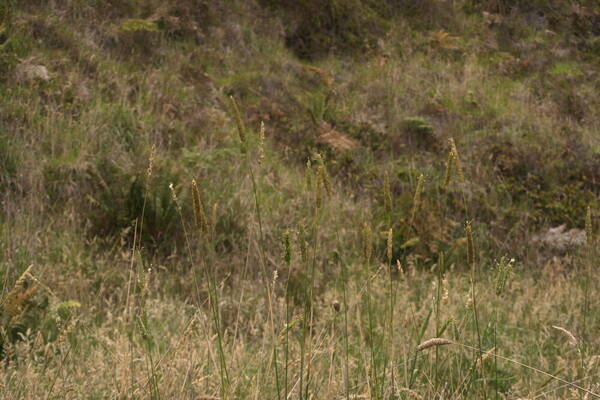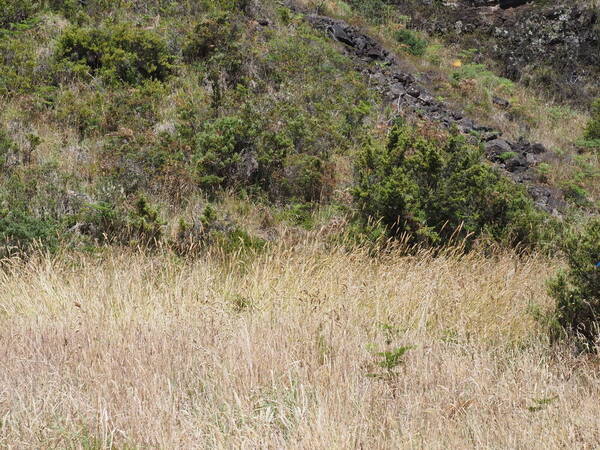Info
Subfamily: Pooideae
Genus etymology: Phalaris = "coot" [Greek] refering to a European species whose fruit is enclosed in white scales, resembling the white sheild of a coot (Fulica atra Linneaus 1758)
Species etymology: aquatica = "belonging to water" [Latin] a misnomer as this occurs in dry habiats
Photosynthetic type: C3 (cool season)
Nativity: naturalized - intentional
First recorded in Hawaiʻi: 1916
Map

Inflorescence






Habit




Spikelets






Landscape



Description
Plants perennial; cespitose, shortly rhizomatous. Culms 60-200 cm, often swollen at the base, rooting at the lower nodes. Ligules 2-12 mm, truncate, lacerate; blades 5-15(20) cm long, 0.5-10 mm wide. Panicles 1.5-15 cm long, 1-2.5 cm wide, usually cylindric, sometimes ovoid, occasionally lobed at the base, spikelets borne singly, not clustered; branches not evident. Spikelets homogamous, with 2-3(5) florets, usually with 1 bisexual floret, occasionally with 2, occasionally the terminal floret viviparous; disarticulation above the glumes, beneath the sterile florets. Glumes 4.4-7.5 mm long, 1.2-1.5 mm wide, keels winged distally, wings 0.2-0.4 mm wide, usually entire, lateral veins conspicuous, smooth; sterile florets usually 1, hairy, if 2, lowest floret to 0.7 mm, upper or only sterile floret 1-3 mm; bisexual florets 3.1-4.6 mm long, 1.2-1.5 mm wide, hairy, stramineous, acute; anthers 3-3.6 mm. 2n = 28.
(Description source: Barkworth, M.E., Capels, K.M. & Long, S. (eds.) 1993. Flora of North America, north of Mexico. Volume 24. Magnoliophyta: Commelinidae (in part): Poaceae, Part 1. Oxford University Press, New York. 911 pp. http://floranorthamerica.org/Phalaris_aquatica )